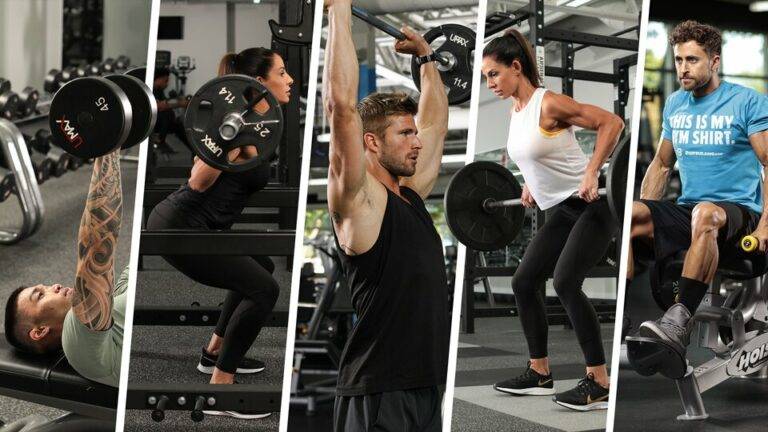Fitness: Definition, Factors, and Types
Author: Giselle Robel
Giselle Robel
Category: Health
“Fitness” is a broad term that means something different to each person, but it refers to your own optimal health and overall well-being.
Being fit not only means physically, but emotionally and mentally healthy, too.
It defines every aspect of your health. Smart eating and active living are fundamental to fitness.
Experts define physical fitness as one's ability to execute daily activities with optimal performance, endurance, and strength with the management of disease, fatigue, and stress and reduced sedentary behavior.
This description goes beyond being able to run quickly or lift heavy weights.
Despite being important, these attributes only address single areas of fitness.
This article will provide the five main components of physical fitness.
Fast facts on fitness:
- Maintaining good physical fitness can help prevent some conditions such as sleeping problems
- With exercise, body composition can change without changing weight.
- Athletes' hearts show different changes depending on their chosen sport.
- Muscle strength increases due to fiber hypertrophy and neural changes.
- Stretching to increase flexibility can ease a number of medical complaints.
Being physically fit depends on how well a person fulfills each of the components of being healthy.
When it comes to fitness, these components are:
- Cardio-Respiratory fitness
- Muscular strength
- Muscular endurance
- Body composition
- Flexibility
Looking at each component individually:
Cardio-Respiratory performance
Cardio-Respiratory endurance indicates how well the body can supply fuel during physical activity via the body's circulatory and respiratory systems.
Activities that help improve cardiorespiratory endurance are those that cause an elevated heart rate for a sustained period of time.
These activities include:
- swimming
- brisk walking
- jogging
- cycling
People who regularly engage in these activities are more likely to be physically fit in terms of cardiorespiratory endurance.
It is important to begin these activities slowly and gradually increase the intensity over time.
Exercising increases cardiorespiratory endurance in a number of ways.
For example, the heart muscle becomes stronger so that it is able to pump more blood per heartbeat.
At the same time, additional small arteries grow within muscle tissue so that they can deliver blood to working muscles more effectively when needed.
The heart's efficiency changes and improves after persistent training.
However, recent research suggests that different types of activity change the heart in subtly different ways.
All types of exercise increase the heart's overall size.
In general, exercise encourages the body to become more efficient at taking on, distributing, and using oxygen.
Over time, this improvement increases endurance and overall health.
Health benefits of cardiorespiratory fitness
Cardio-Respiratory fitness can help reduce the risk of conditions including:
Muscular strength
There are a number of ways to measure muscular strength.
Generally, lifting a set weight in a prescribed position and comparing the results against any given population is the best way.
In general, if a person works their muscles consistently and regularly, they will increase in strength.
There are various ways of putting the muscles through rigorous activity, but anything that works a muscle until it is tired will increase muscle strength over time.
To build muscle, an individual must regularly exercise their muscles and take in enough protein.
Training causes the muscle cells to expand, and there is an increase in actin and myosin production.
Muscular endurance
Fitness can also include muscular endurance, which is the ability of a muscle to continue exerting force without tiring.
As mentioned above, strength training builds bigger muscles. Endurance training, on the other hand, does not necessarily generate muscles of a larger size.
This is because the body focuses more on the cardiovascular system, ensuring that the muscles receive the oxygenated blood they need to keep functioning.
Another important change in muscles that people specifically train for endurance concerns the different types of muscle tissue: fast-twitch and slow-twitch fibers.
Fast-twitch fibers contract quickly but get tired quickly. They use a lot of energy and are useful for sprints.
They are whitish, as they do not require blood to function.
Slow-twitch fibers are best for endurance work, as they can carry out tasks without getting tired.
They are present in core muscles. These fibers appear red, as they rely on a good supply of oxygenated blood and contain stores of myoglobin.
Body composition
Body composition measures the relative amounts of muscle, bone, water, and fat an individual has.
A person can potentially maintain the same weight but radically change the ratio of each of the components that make up their body.
For instance, people with a high muscle (lean mass) ratio might weigh more than those with the same height and waist circumference who have less muscle.
There are several methods for calculating body composition.
For example, a doctor can measure a person's body fat using tools such as calipers or through bioelectrical impedance analysis to detect fat cells.
The above methods are prone to inaccuracies, however.
Flexibility
Flexibility refers to the range of movement across a joint.
It is important because it improves the ability to link movements together smoothly and can help prevent injuries. It is specific to each joint and depends on a number of variables, including the tightness of ligaments and tendons.
Various activities that stretch the joints, ligaments, and tendons can increase flexibility.
There are three common types of stretches that people use to increase flexibility:
- Dynamic stretching
- This refers to the ability to complete a full range of motion in a particular joint.
- People use this type of stretch in standard warmup exercises, as it helps prepare the body for physical activity.
- Static-active stretching
- This refers to holding the body or part of the body in a stretched position and maintaining that position for a period of time.
- One example of static-active stretching is the splits.
- Ballistic stretching
- People should only engage ballistic stretching when the body is already warmed up and limber from exercise.
- It involves stretching in various positions and bouncing.
There are a number of ways to improve flexibility.
Having a daily stretching regimen can be the simplest and most efficient way of achieving whole-body flexibility.
Summary

In general, fitness means different things to different people.
The important message is that embarking on any regular exercise will be of benefit to a person's health.
The more exercise they do, the healthier they will look and feel.













